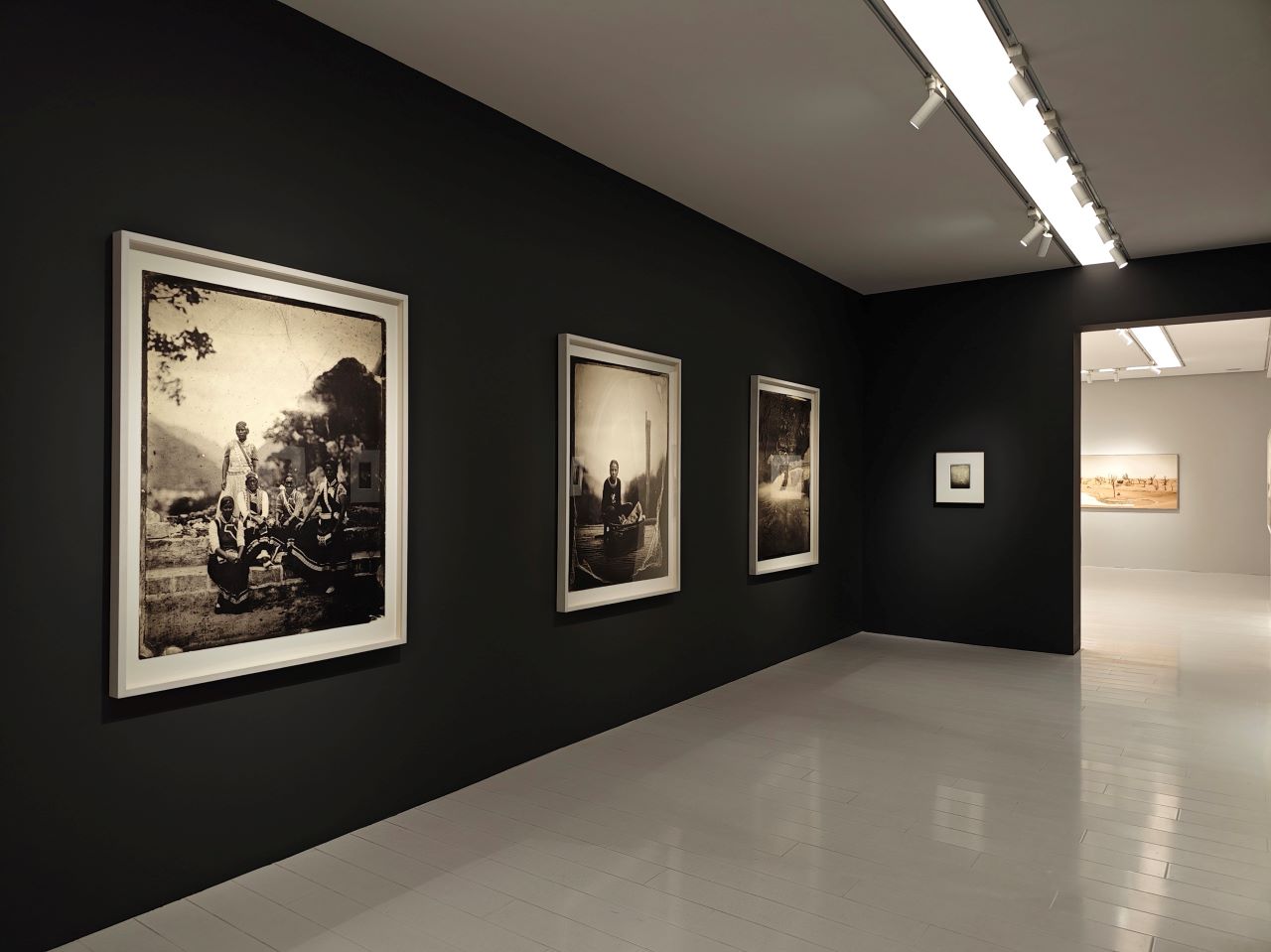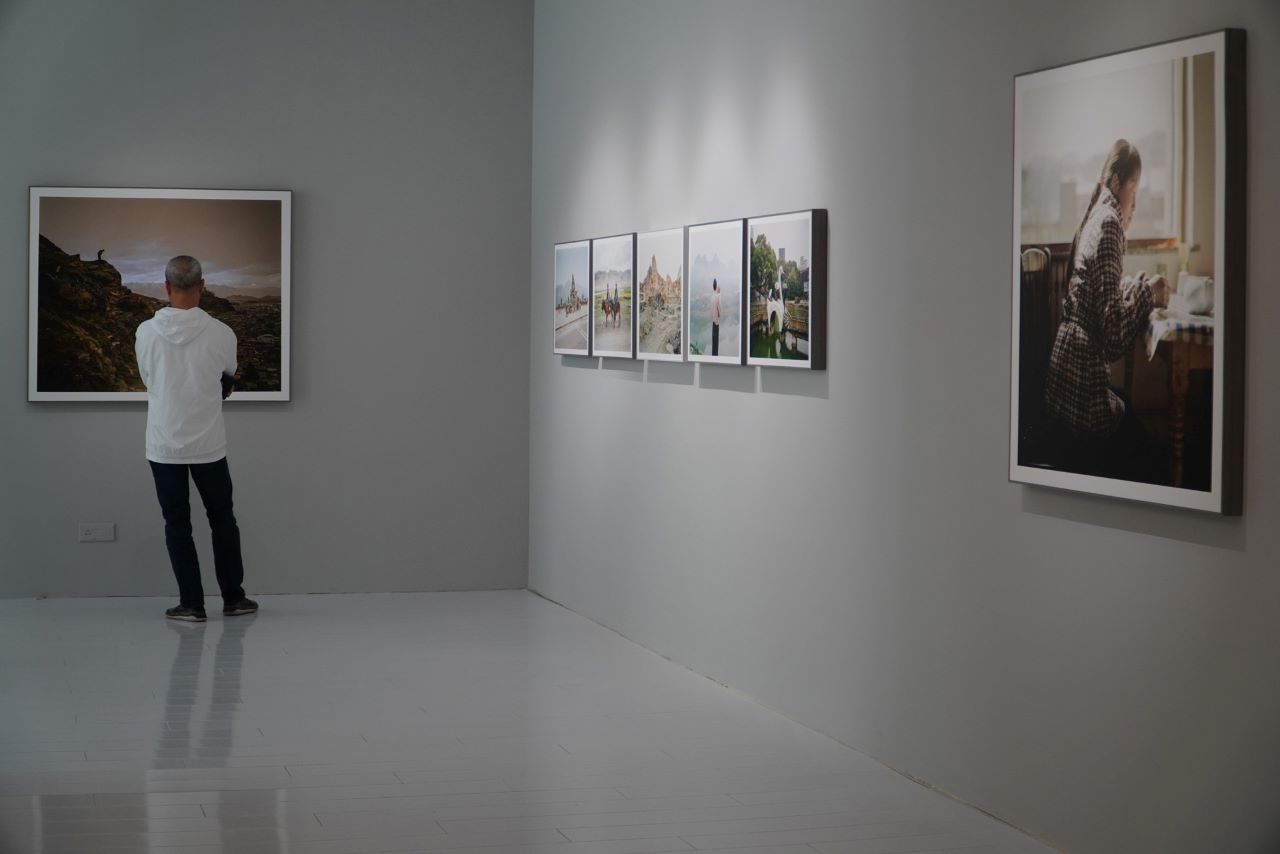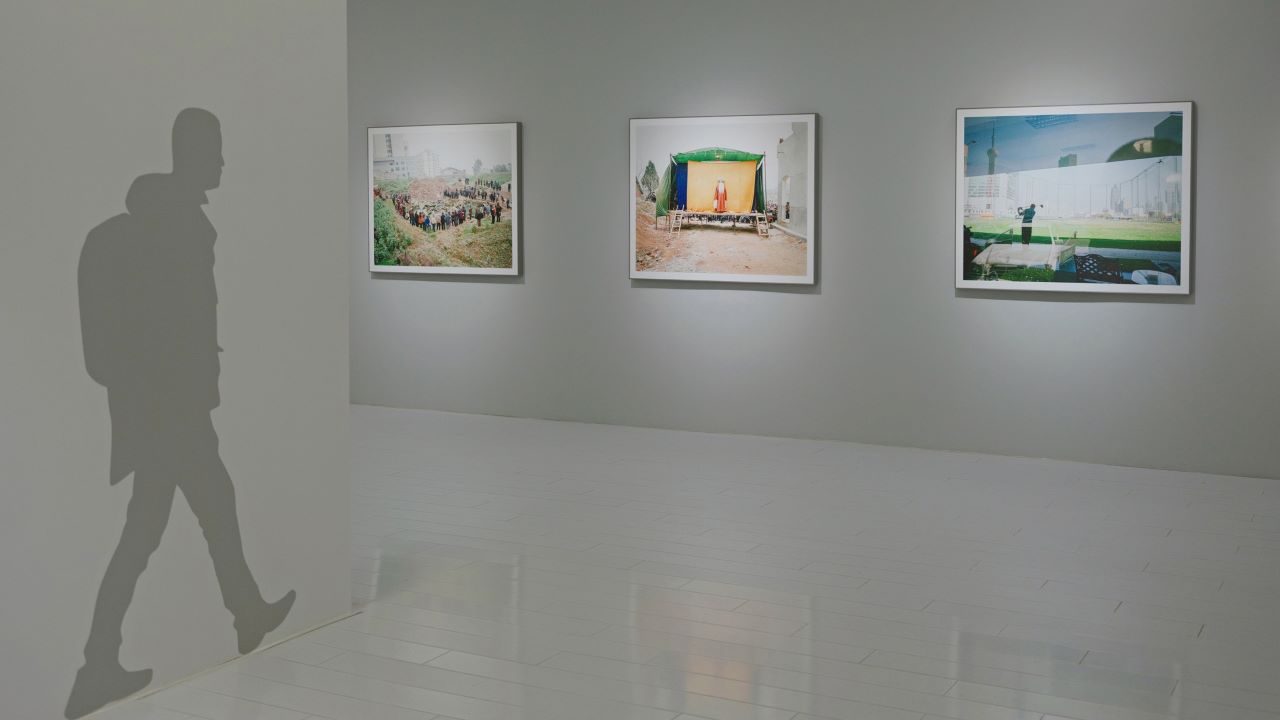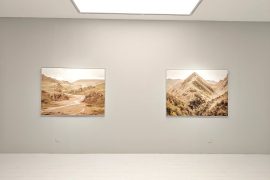Between 2006 and 2008, Luo Dan drew a big cross on the map of China with his two series of works, “China Route 318” and “North, South.” This may not have been something he initially thought of when he set out from Chengdu to Shanghai. In a later interview, he revealed that he resigned from his job in February 2006 and started his road trip and photography out of a sense of weariness and anxiety towards his life and creative state at the time. Over the previous decade, he had been struggling between his busy work as a photojournalist and “shooting something that really belongs to himself, something he wanted to express through the lens.” “I was a bit exhausted, like a circuit switch, going back and forth, causing me a lot of pain. It couldn’t go on like this.” A few road movies he watched during that time, as well as Jack Kerouac’s “On the Road,” gave him timely inspiration and ultimately ignited his determination to take action.

If Jack Kerouac’s journey at 25 was more like a response to the call of his innermost feelings driven by youthful hormones, seeking friends and girls, poetry and music, parties, liquor, and marijuana from East to West, North to South, then Luo Dan’s journey after 35 was not only a response to his own inner call but also carried a more conscious questioning of contemporary social and cultural phenomena. He said, “In today’s China, materialism is becoming the only value judgment standard. It’s a terrible thing for a country, even the world. Actually, the photos I took along the way were to confirm the consequences of such values.” For Luo Dan, travel and photography are the two aspects of his creative behavior. The former is a farewell, and the latter is an entry. The former is a response to his inner self, and the latter is a way to enter reality and search outward. During his travels, he could free himself from the daily routine that trapped him. “Psychologically and in action, I felt no different from a vagabond… My heart was incredibly free!” Photography, on the other hand, was an active choice for him to enter the forefront of a larger social scene. It is a kind of “autonomous viewing” in contemporary Chinese photography, as Gu Zheng put it.

Luo Dan’s process of “viewing” can be roughly divided into two stages, the first of which includes two series, “China Route 318” and “North, South”. During this stage, he observed and recorded the social reality across China with a panoramic view. While maintaining a broad perspective, each of his photographs is a concrete and vivid close-up of people and their activities, or a slice of social landscapes. Some of these images have a solemnity akin to religious paintings, while others are light and easy like genre paintings. Some are surrealistic collages of reality, while others are realistic depictions. In the process of his viewing and the constant movement, he weaves together a montage of contemporary Chinese social life, demonstrating its rich and contradictory social appearance.

In the second phase, in “Simple Song” and “No Man’s Land,” Luo Dan’s gaze becomes even more focused, concentrating on a particular place or area, reflecting a phenomenon or an emotion. “Simple Song” captures a group of devoutly religious people living in a remote mountain village in Yunnan. The effect of the ancient wet-plate process erases the distance of time, like the faith that is passed down from generation to generation. The gray and delicate, soft and heavy atmosphere conveys a gentle, calm and friendly emotion. The photos are shot in a simple and relaxed manner, yet they are romantic and poignant. In “No Man’s Land,” Luo Dan uses vast scenes to depict the seemingly deserted, desolate, and spectacular Western landscapes. However, upon closer inspection, we can always find traces of human activity in the picture. The grandiose architectural structures or powerful machines are insignificant in the majestic natural environment. If what we see in “Simple Song” is a calm and self-sufficient life and spirit of the people, then what “Desolate Landscapes” reveals is the ambitious and greedy nature of humanity.

Luo Dan’s series can be said to depict a vivid social portrait of contemporary China, from which we can see the various facets of society during the intense process of social transformation, as well as the human psychological states. The author once joked with Luo Dan that in the series before and after, the number of people in the pictures seems to be gradually decreasing, from people of all shapes and colors from all over the country to characters concentrated in a village, and then to seemingly completely empty landscapes. However, people have never been absent from his pictures. Luo Dan once said that his photography “must capture people.” In these series, the artist developed from direct representation and recording of people and their lives to being attracted by the spirit and beliefs of a group of people, and then to observing people from a critical and compassionate perspective in a larger and more desolate nature. And more importantly, there is a special person in these works, a person who is constantly searching, and that is the artist himself. Just as Kerouac self-proclaimed in “On the Road,” “Actually, we were two Catholic wanderers roaming the American earth, seeking God. And we found him.” Luo Dan said, “I am not trying to portray how the real world is, but to discover and verify various signs belonging to my own heart in the reality.”


In an article written several years ago, the author referred to the travel photography of Luo Dan as a “pilgrimage”. In fact, since Luo Dan set foot on the 318 National Highway, a group of young artists have also embarked on their own journeys, taking photographs along the coastline, Yellow River, Yangtze River, and Great Wall, forming a very rich and active period of Chinese documentary photography. The author mentioned in the article that “all the physical hardships, inner loneliness, and introspection faced by (ancient) pilgrims ultimately aim to explore the relationship between oneself and the Creator.” In today’s China, most people “no longer have religious, revolutionary, or other lofty ideals to establish connections between individuals and larger communities.” However, “people always seem to be caught up in something in order to find their own place,” and the process of photography during travel is where the photographer explores and establishes their relationship with the outside world.


Gu Zheng defined the social function of documentary photography as a “visual style that recognizes the social reality” and a “cultural critique device.” For Luo Dan, as an individual artist, his photography practice also includes the pursuit of feelings commonly found in artistic creation. He said, “A friend once suggested that I could use forms of sociological research, such as image files. I felt a bit limited, what I wanted was personal experience.” But the experience and feelings that Luo Dan referred to are not a closed, self-contained existence. They are a kind of internal and external resonance in the process of travel. Photography is also like this – it is both an outward gaze and a mutual projection of internal and external aspects. Luo Dan’s travel photography is not only a way to observe and experience the surrounding real world from the inside, but also a way to solve internal problems by seeking external help, enriching his own inner world with the outside world, and achieving empathy, connection, and identity with objects. He has shifted from quick travel photography to quiet observation, even experiencing a lonely pilgrimage like a practitioner. Peter said, ” Save yourselves from this corrupt generation.” Luo Dan drew that big cross with practical actions, realizing his life in action.
By Shi Hantao

In Search of It
Artist: Luo Dan
Curator: Shi Hantao
Opening Time: 22 Apr, 2023 15:00-18:30
Duration: 22 Apr – 30 Jun, 2023 (Tuesday-Saturday 10:30-18:30)
Venue: 1F, Block 2, No.50 Moganshan Rd, Shanghai, M ART CENTER


















